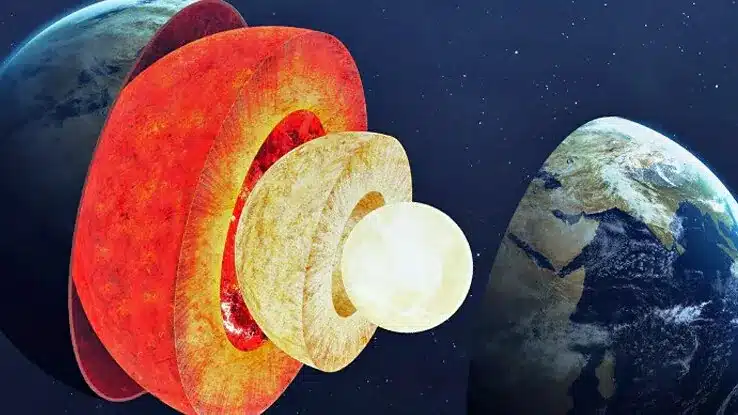Unveiling Earth’s Hidden Mantle Structures

Recent research has revealed intriguing structures deep within Earth’s mantle, sparking curiosity among scientists. These anomalies, which resemble subducted crustal slabs, were discovered using advanced imaging techniques. Their presence in regions devoid of recorded tectonic activity challenges existing geological theories. This groundbreaking discovery may provide valuable insights into Earth’s geological history and the processes that shape our planet.
Advanced Imaging Reveals New Anomalies
A study published in *Scientific Reports* on November 4, 2024, introduced a revolutionary imaging method called full-waveform inversion. This technique allows scientists to create detailed maps of the Earth’s interior by integrating seismographic data from multiple earthquakes into a single, comprehensive model. Andreas Fichtner, a seismologist at ETH Zurich, emphasized the significance of this approach, likening it to advancements in medical imaging that have transformed our understanding of hidden biological structures.
Full-waveform inversion provides a clearer picture of the Earth’s mantle than traditional methods. By analyzing how seismic waves travel through the Earth, researchers can identify unusual structures that were previously undetectable. This innovative technique has opened new avenues for geological exploration, enabling scientists to delve deeper into the mysteries of our planet’s interior. The anomalies discovered through this method have raised questions about their origins and implications for our understanding of Earth’s geological processes.
Anomalies Found in Unexpected Locations
The newly identified anomalies are located far from known tectonic activity zones, which adds to their mystery. Researchers utilized the Piz Daint supercomputer at the Swiss National Supercomputing Center to analyze seismic data and pinpoint these structures. Thomas Schouten, a doctoral candidate at the ETH Zurich Geological Institute, noted that while the anomalies are visible throughout Earth’s mantle, their exact nature remains elusive.
The discovery of these anomalies in unexpected locations challenges long-held beliefs about the Earth’s internal structure. Traditionally, scientists have associated tectonic activity with specific regions, but these findings suggest that significant geological features may exist in areas previously thought to be stable. Understanding the implications of these anomalies could reshape our knowledge of plate tectonics and the dynamic processes that govern the Earth’s interior.
Speculations and Future Research
The newly discovered structures are speculated to be ancient crustal fragments or other dense materials formed billions of years ago. Schouten explained that seismic waves interact with these anomalies similarly to how they interact with subducted slabs, but this observation alone does not confirm their identity. To gain a clearer understanding, researchers plan to analyze the material properties responsible for the observed wave speeds.
These findings present new challenges for geologists and seismologists. As researchers continue to investigate these anomalies, they hope to uncover new insights into Earth’s geological evolution. The potential to learn more about the planet’s history and the processes that have shaped it is both exciting and daunting. Future research will focus on unraveling the mysteries of these hidden structures, which could lead to a deeper understanding of Earth’s internal dynamics and its geological past.
Observer Voice is the one stop site for National, International news, Sports, Editor’s Choice, Art/culture contents, Quotes and much more. We also cover historical contents. Historical contents includes World History, Indian History, and what happened today. The website also covers Entertainment across the India and World.

